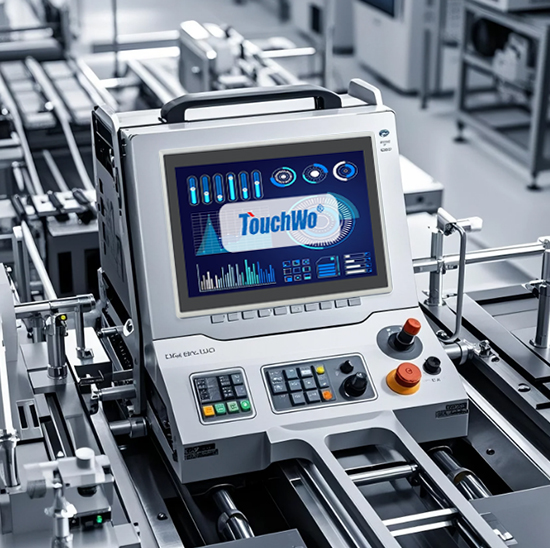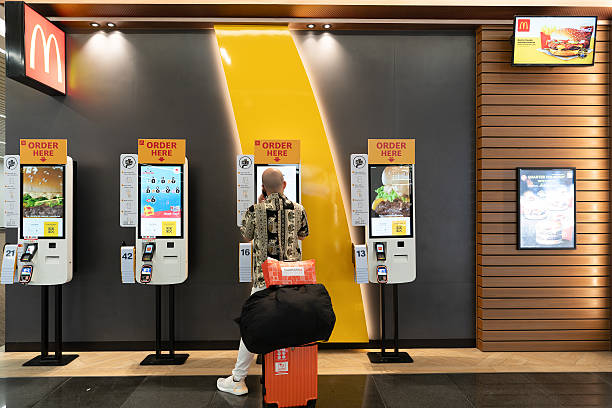Longs conduisés avec des passagers arrière - que les enfants, famille, ou des amis - viennent souvent avec un défi commun: Garder tout le monde diverti. C'est là que les écrans tactiles arrière pour les systèmes de divertissement brillent. Plus de fonctionnalités «supplémentaires», Ces écrans sont devenus essentiels pour les véhicules modernes, Laisser les passagers diffuser des films, jouer à des jeux, Parcourir les applications, or even control climate settings with a simple tap. Unlike clunky portable tablets (which slip, die, or require messy cables), integrated Rear-Seat Touch Screens are secure, power-efficient, and tailored to your vehicle’s interior. But with so many options—from headrest-mounted screens to overhead displays—choosing the right one can feel overwhelming. This guide will break down what makes a great Rear-Seat Touch Screen, how to pick one for your vehicle, and how to keep it running smoothly, ensuring every road trip is enjoyable for everyone in the car.

Core Features to Look for in a Rear-Seat Touch Screen
A high-quality Rear-Seat Touch Screen should balance functionality, durabilité, and user-friendliness—here are the non-negotiable features:
1. Display Quality and Size
Passengers (especially kids) need clear, large enough screens to enjoy content without straining:
Taille: Headrest-mounted screens typically range from 7–10 inches (ideal for individual passengers), while overhead screens are 10–15 inches (great for multiple backseat users). Choose based on your vehicle’s rear-seat space (par exemple., 7-inch screens for compact cars, 10-inch for SUVs).
Résolution: Aim for at least 1280×720 (HD) resolution—this ensures movies, games, and text are sharp. Avoid lower-resolution screens (800×480), which look pixelated and reduce enjoyment.
Angle de vision: Look for “wide viewing angles” (170°+ horizontal/vertical). This means passengers can see the screen clearly even if they’re not sitting directly in front of it (par exemple., a child in a booster seat).
2. Connectivity and Content Options
The best Rear-Seat Touch Screens let passengers access their favorite content easily:
Wireless options: Bluetooth (for streaming music or podcasts), Wifi (for streaming Netflix, YouTube, or games), and screen mirroring (Apple AirPlay, Android Screen Cast) so passengers can use their phone’s apps on the big screen.
Wired ports: USB-A/USB-C ports for charging devices or plugging in a USB drive with movies/games. Some screens also include HDMI ports for connecting tablets or gaming consoles (par exemple., Nintendo Switch).
Built-in storage: 16GB–64GB of internal storage lets you preload movies or games, perfect for drives with no Wi-Fi (par exemple., rural roads).
3. User-Friendly Design for All Passengers
Rear-Seat Touch Screens should be easy to use—even for kids or older passengers:
Simple interface: Grand, colorful icons and minimal menus (avoid complicated settings that require help from the driver).
Touch responsiveness: Faible latence (less than 100ms) so taps, glisse, and pinch-to-zoom work instantly—no frustrating delays when navigating menus or playing games.
Télécommande: A wireless remote (or app control via a phone) lets passengers adjust volume, change content, or pause without reaching for the screen (great for younger kids).
How to Choose a Rear-Seat Touch Screen for Your Vehicle
The right screen depends on your vehicle type, passenger needs, and budget—follow these steps:
1. Match the Screen Type to Your Vehicle
There are two main types of Rear-Seat Touch Screens, each suited to different vehicles:
Headrest-mounted screens: Attach to the back of front-seat headrests (or replace existing headrests with built-in screens). Ideal for sedans, compact SUVs, or vehicles where passengers want individual entertainment (par exemple., one kid watching a movie, another playing a game).
Overhead screens: Mount to the ceiling above the rear seats. Best for full-size SUVs, minivans, or vehicles with three rows—they let multiple passengers watch the same content (great for family trips).
2. Consider Passenger Needs
Think about who will use the screen most:
Kids: Prioritize durability (verre à rayures), built-in games, and parental controls (to limit screen time or block inappropriate content).
Adults/teens: Look for Wi-Fi streaming, screen mirroring, and USB-C charging ports (to power laptops or phones).
Long drives: Choose screens with long battery life (for portable models) or hardwired power (for integrated systems) to avoid dead screens mid-trip.
3. Check Compatibility and Installation
Vehicle fit: For aftermarket screens, confirm the size fits your headrests or ceiling (measure before buying). OEM screens (factory-installed) are designed for specific makes/models (par exemple., Toyota Sienna, Honda Odyssey) and require professional installation.
Power source: Hardwired screens connect to your vehicle’s electrical system (professional installation recommended), while portable models use USB charging or batteries (easier to install but need regular recharging).
Maintenance Tips for Rear-Seat Touch Screens
To keep your Rear-Seat Touch Screen working well for years, follow these simple steps:
1. Clean the Screen Safely
Use a microfiber cloth (dry or slightly dampened with distilled water) to wipe away fingerprints, poussière, or food crumbs (common with kids). Avoid paper towels or rough cloths—they scratch the screen.
For sticky stains (par exemple., candy, soude), use a small amount of 70% isopropyl alcohol on the cloth—never spray liquid directly on the screen (it can seep into ports and damage internal parts).
2. Protect Against Damage
Scratch guards: Apply a tempered glass screen protector to prevent scratches from toys, 指甲 (nails), or accidental bumps.
Secure the screen: For portable headrest screens, ensure the mount is tight (so it doesn’t wobble while driving) and keep loose items (par exemple., backpacks, toys) away from the screen to avoid impacts.
3. Update Software Regularly
If your screen has smart features (Wifi, applications), update its firmware regularly (via Wi-Fi or a USB drive). Updates fix bugs, improve performance, and add new features (par exemple., support for new streaming apps).
FAQs About Rear-Seat Touch Screens
T1: Can I install a Rear-Seat Touch Screen in an older vehicle (par exemple., a 10-year-old sedan)?
A1: Yes—aftermarket headrest-mounted screens are designed to fit most vehicles. You’ll just need to choose a model that works with your vehicle’s power source (USB or 12V outlet) or have it hardwired by a professional.
T2: Will a Rear-Seat Touch Screen drain my vehicle’s battery?
A2: Hardwired screens only use power when the vehicle is on (or in accessory mode), so they won’t drain the battery. Portable screens use their own batteries (or USB power), so they also won’t affect your vehicle’s battery.
T3: Can passengers listen to audio from the Rear-Seat Touch Screen without disturbing the driver?
A3: Yes—most screens support wireless headphones (Bluetooth or infrared). Some models even have built-in headphone jacks, so passengers can use wired headphones to enjoy content quietly.
T4: How long do Rear-Seat Touch Screens typically last?
A4: Avec une maintenance appropriée, integrated (hardwired) screens last 5–7 years (same as most vehicle electronics). Portable screens last 3–5 years, depending on battery life and usage.
A Rear-Seat Touch Screen turns long, boring drives into enjoyable ones—whether you’re keeping kids occupied with movies, letting teens stream their favorite shows, or giving adults a way to relax. By focusing on display quality, connectivité, and passenger needs, you can choose a screen that fits your vehicle and makes every trip better.
If you’re unsure which Rear-Seat Touch Screen is right for your vehicle (par exemple., need help picking between headrest vs. overhead models, want to confirm compatibility with your car), Remplissez le formulaire sur notre site Web. Our automotive tech team will analyze your vehicle make/model, passenger needs, and budget to recommend a tailored solution—helping you create a more enjoyable driving experience for everyone.



